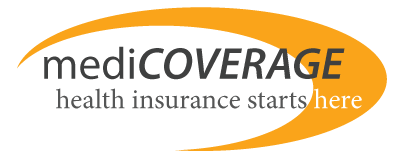Health Insurance for individuals and Families
Health Insurance Research: What to Know Before You Buy
In order to decide which health insurance plan is right for you, it helps to understand some of the key terms used to describe each plan. Following are six health insurance buzzwords that you’ll see over and over again as you conduct your research: Premium, Deductible, Co-pay, Co-insurance, Maximum Out-of-Pocket and Lifetime Maximum Payout.
1) Premium: While not mentioned in the video above, a premium is a fancy way to refer to your monthly health insurance bill. In general, the higher the health insurance premium, the less you will end up paying on 2-6 below. Remember, you are still required to pay your premium even after you satisfy your deductible.
2) Deductible: The deductible is the cash amount that you have to fork over before your health insurance company is required to start contributing. For instance, a $500 deductible means that when you go to the hospital to have that hatchet taken out of your spleen, you’ll have to pay the first $500; the health insurance company will kick in the remaining balance. In most cases you will not have to pay the deductible on the spot, but will be billed later. Remember, most deductibles reset each calendar year.
3) Co-pay: A co-pay is the dollar amount that some plans require you to pay toward the cost of a particular health service (e.g. $15) every time you see the doctor. Sometimes you will pay the co-pay instead of the deductible (called “deductible waived”) and sometimes you will have to pay a co-pay in addition to your deductible. Co-pays typically don’t contribute to your deductible.
4) Co-insurance. The term co-insurance refers to the percentage of fees you share with your health insurance company. For example, if you have 20% co-insurance, the insurance company will pay for 80% of the operation and you will pay the remaining 20%. Most of the time co-insurance kicks in after you satisfy your deductible. In other words, until you meet your deductible for a given year, you will typically pay 100% of your fees up to the amount of the deductible.
5) Maximum Out-of-Pocket: The out-of-pocket maximum is the most amount of money you would have to pay for all covered services, in addition to your monthly premiums. This can be interpreted as your total financial risk if you fall off the ladder you’ve just stacked on top of that garage sale coffee table, or you have a particularly poor showing at the crash-up derby. (e.g. $3500 per year) The out-of-pocket maximum is an important factor to consider alongside the premiums and co-pays when selecting the right plan for you.
6) Lifetime Maximum Payout: The maximum payout is the most money the insurance company will pay toward your medical expenses throughout the lifetime of your policy. This amount should be at least $3 million, preferably higher. The Affordable Care Act has added a law that all new health plans as of January 1, 2014 cannot have a yearly or lifetime limit on essential health benefits.
Look for these six terms while reviewing health insurance benefit information and you will get an understanding of how much you will pay up front (#1 premium) and how much you will have to pay if you need medical care, (#2 - #5). Remember there are always trade-offs: if you elect a plan with a low premium, you will usually pay higher fees if you wind up in the hospital. Regardless, having a plan with a low premium and high deductible will still help you realize a huge savings over having no insurance at all, should you clothes-line yourself during your next game of night frisbee.
Next Steps?
Get a quote and compare the premium, deductible, co-pay, co-insurance, out-of-pocket maximum and maximum payout to help you find the right plan. If you still have more questions, check out our Frequently Asked Health Insurance Questions page.
